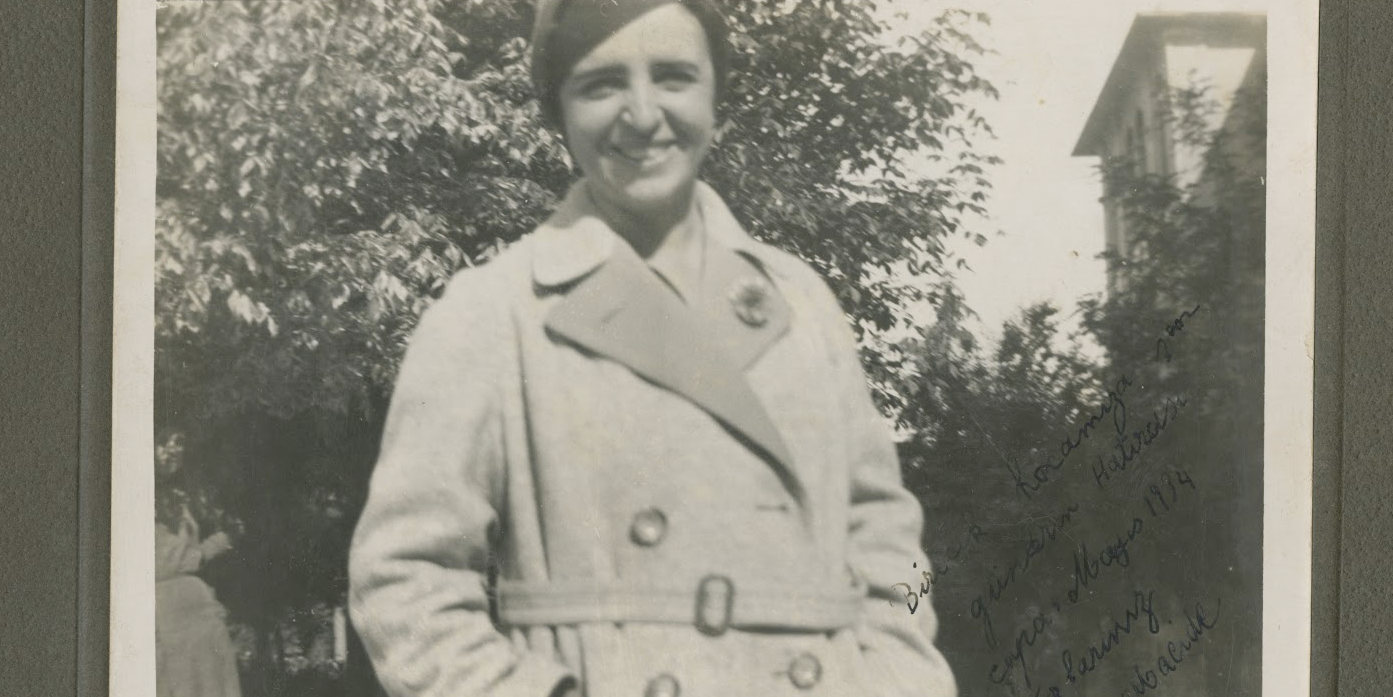Late Hanafi Law in the Ottoman Empire
with Samy Ayoub
hosted by Hadi Hosainy and Christopher Rose
Download the episode
Much of the scholarship on the Hanafi school of Islamic jurisprudence, which had its roots in the sociopolitical context of the 8th century Iraq, focuses on the early centuries of that school's development. Meanwhile, recent scholarship on the later periods emphasizes the transformations within the Hanafi jurisprudence in the early modern and modern periods, particularly as a result of the increasing role of the Ottoman state in the process of lawmaking. Dr. Samy Ayoub presents a different approach on Ottoman Hanafi jurists, who maintained the integrity of the legal discourse while recognizing the needs of the times. In this episode, Dr. Ayoub shares some of his reseach on the question of continuity and change under the self-desctibed “late-Hanafis” from the 16th century until the making of mecelle, the first attempt at codifying Islamic law, during the late 19th century.
CREDITS
Episode No. 212
Release date: 22 November 2015
Location: The University of Texas at Austin
Produced in collaboration with Christopher Rose at 15 Minute History. Recording credits to Michael Heidenreich (HIGH-den-ryke), Jacob Weiss, and the audio services team in Liberal Arts Instructional Technology Services at the University of Texas at Austin.
Sound samples courtesy of Chris Gratien
Image from Library of Congress
Bibliography courtesy of Samy Ayoub
SELECT BIBLIOGRAPHY
Abu Zahra, Muḥammad. Abū Ḥanīfa: Ḥayātuh wa-ʿaṣruh, ārāʾuh wa-fiqhuh. 2nd ed. [Cairo]: Dār al-Fikr al-ʿArabī, 1965?.
Burak, Guy. The Second Formation of Islamic Law: The Ḥanafī School in the Early Modern Ottoman Empire (Cambridge: Cambridge University Press, 2014).
Cuno, Kenneth M. “Was the Land of Ottoman Syria Miri or Milk? An Examination of Juridical Differences within the Ḥanafī School,” Studia Islamica 81 (1995), pp. 121-152.
Gerber, Haim. Islamic Law and Culture 1600-1840 (Leiden: Brill, 1999).
_____. State, society, and law in Islam: Ottoman law in comparative perspective (Albany: State University of New York Press, 1994).
Hallaq, Wael. “Was the Gate of Ijtihād Closed?" International Journal of Middle East Studies 16, 1 (1984): 3-41.
_____. Sharīʿa: Theory, Practice, Transformations. Cambridge; New York: Cambridge University Press, 2009.
Ḥaskafī (d. 1088/1677) = ʿAlāʾ al-Dīn Muḥammad b. ʿAlī b. Muḥammad al-Dimashqī al-. al-Durr al-mukhtār. N.p., n.d.
Ibn ʿĀbidīn (d. 1252/1836) = Muḥammad Amīn b. ʿUmar, Minḥat al-Khāliq ʿalā ʾl-Baḥr al- rāʾiq. On the margins of al-Baḥr al-rāʾiq by Ibn Nujaym. [Cairo]: n.p., 1893?.
_____. Radd al-muḥtār ʿalā ʾl-Durr al-mukhtār. Edited by ʿĀdil Aḥmad ʿAbd al-Mawjūd and ʿAlī Muḥammad Muʿawwaḍ. Beirut: Dār al-Kutub al-ʿIlmiyya, 1994-1998.
Ibn al-Humām (d. 861/1457) = Muḥammad b. ʿAbd al-Wāḥid. Fatḥ al-qadīr, published together with his commentary, Sharḥ Fatḥ al-qadīr liʾl-ʿājiz al-faqīr Beirut: Dār Ṣādir, [1972?].
Ibn Nujaym, Zayn al-Dīn b. Ibrāhīm. al-Ashbāh wa-l-Naẓā’ir ‘alá Madhhab Abī Ḥanīfah al-Nu‘mān (Cairo: Mu’assasat al-Ḥalabī, 1978).
_____. al-Baḥr al-Rā’iq Sharḥ Kanz al-Daqā’iq (Beirut: Dār al-Kutub al-‘Ilmiyyah, 1997), 9 vols.
Imber, Colin. Ebu’s-Suʿud: The Islamic Legal Tradition (Stanford: Stanford University Press, 1997).
Jackson, Sherman. “The Primacy of Domestic Politics: Ibn Bint al-Aʿazz and the Establishment of the Four Chief Judgeships in Mamlūk Egypt.” Journal of the American Oriental Society 115 (1995): 52-65.
_____. Islamic Law and the State: The Constitutional Jurisprudence of Shihāb al-Dīn al-Qarāfī. New York: E.J. Brill, 1996.
Jennings, R. C. “Kadi, Court, and Legal Procedure in 17th CE. Ottoman Kayseri,” Studia Islamica 48 (1978), pp. 133-172.
Johansen, Baber. “Claims of Men and Claims of God: The Limits of Government Authority in Hanafite Law.” In Pluriformiteit en Verdeling van de Macht in het Midden-Oosten, 60-104. Nijmegen, 1980.
_____. “Sacred and Religious Elements in Hanafite Law: Function and Limits of the Absolute Character of Government Authority.” In Islam et politique au Maghreb, edited by Abdallah Hammoudi, Ernest Gellner, and Jean-Claude Vatin, 281ff. Paris, 1981.
Laknawī (d. 1304/1887) = Abū ʾl-Ḥasanāt ʿAbd al-Ḥayy b. Muḥammad al-Anṣārī. al-Nāfiʿ al-kabīr. On the margins of al-Jāmiʿ al-ṣaghīr by Shaybānī. Karachi: Idārat al- Qurʾān waʾl-ʿUlūm al-Islāmiyya, 1407/1987.
Marghīnānī (d. 593/1197) = Burhān al-Dīn ʿAlī b. Abī Bakr al-. al-Hidāya sharḥ Bidāyat al- mubtadiʾ. Edited by Muḥammad Muḥammad Tāmir and Ḥāfiẓ ʿĀshūr Ḥāfiẓ. Cairo: Dār al-Salām, 2000. Also 1966 edition: Edited by Muḥammad ʿAdnān Darwīsh. Cairo: Muḥammad ʿAlī Ṣubayḥ, 1966. English translation: The Hedàya, or Guide: A Commentary on the Mussulman Laws. Translated by Charles Hamilton (by the Order of the Governor-General and Council of Bengal [Warren Hastings]). London: T. Bensley, 1791. [Repr. as The Hedaya: Commentary on the Islamic Law (New Delhi: Kitāb Bhavan, 1985).]
Nielsen, Jørgen S. Secular Justice in an Islamic State: Maẓālim under the Baḥri Mamlūks 662/1264-789/1387 (Leiden: Nederlands Historisch-Archaeologisch Instituut te Istanbul, 1985).
Ramlī (d. 1004/1596). Nihāyat al-muḥtāj ilā sharḥ al-Minhāj. [Egypt]: Muṣṭafā al-Bābī al- Ḥalabī, 1938.
Rapoport, Yossef. “Legal Diversity in the Age of Taqlīd: The Four Chief Qāḍīs under the Mamlūks.” Islamic Law and Society 10, 2 (2003): 210-28.
Repp, Richard C. The Müfti of Istanbul: A Study in the Development of the Ottoman Learned Hierarchy (London: Ithaca Press, 1986).
Sarakhsī (d. 483/1090) = Shams al-Aʾimma Muḥammad b. Aḥmad b. Sahl. Mabsūṭ. Edited by Abū ʿAbd Allāh Muḥammad Ḥasan Ismāʿīl al-Shāfiʿī. Beirut: Dār al-Kutub al- ʿIlmiyya 2001.
Shaybānī (d. 189/804) = Muḥammad b. al-Ḥasan. al-Jāmiʿ al-kabīr. Edited by Abū ʾl-Wafāʾ al-Afghānī. [India]: Maṭbaʿat al-Istiqāma, 1357.
Wheeler, Brannon. Applying the Canon in Islam: The Authorization and Maintenance of Interpretive Reasoning in Ḥanafī Scholarship. Albany: State University of New York Press, 1996.
Zaylaʿī (d. 743/1343) = Fakhr al-Dīn ʿUthmān b. ʿAlī b. Miḥjan. Tabyīn al-ḥaqāʾiq. Edited by Aḥmad ʿIzzū ʿInāya. Beirut: Dār al-Kutub al-ʿIlmiyya, 2000.













Comments
Post a Comment
Due to an overwhelming amount of spam, we no longer read comments submitted to the blog.